Potřebujeme váš souhlas k využití jednotlivých dat, aby se vám mimo jiné mohly ukazovat informace týkající se vašich zájmů. Souhlas udělíte kliknutím na tlačítko „OK“.
ASTM E637-05(2011)
Standard Test Method for Calculation of Stagnation Enthalpy from Heat Transfer Theory and Experimental Measurements of Stagnation-Point Heat Transfer and Pressure
Automaticky přeložený název:
Standardní zkušební metoda pro výpočet stagnaci enthalpie z teorie přenosu tepla a experimentálních měření stagnace-Point přenosu tepla a tlaku
NORMA vydána dne 1.10.2011
Informace o normě:
Označení normy: ASTM E637-05(2011)
Poznámka: NEPLATNÁ
Datum vydání normy: 1.10.2011
Kód zboží: NS-47462
Počet stran: 16
Přibližná hmotnost: 48 g (0.11 liber)
Země: Americká technická norma
Kategorie: Technické normy ASTM
Kategorie - podobné normy:
Anotace textu normy ASTM E637-05(2011) :
Keywords:
enthalpy distribution, enthalpy profile, local enthalpy, stagnation enthalpy, Heating tests--aerospace materials, Plasma arc gas enthalpy, Simulated service test--space environment, Stagnation conditions, ICS Number Code 17.200.10 (Heat. Calorimetry)
Doplňující informace
| Significance and Use | ||||||||||||||
|
The purpose of this test method is to provide a standard calculation of the stagnation enthalpy of an aerodynamic simulation device using the heat transfer theory and measured values of stagnation point heat transfer and pressure. A stagnation enthalpy obtained by this test method gives a consistent set of data, along with heat transfer and stagnation pressure for ablation computations. |
||||||||||||||
| 1. Scope | ||||||||||||||
|
1.1 This test method covers the calculation from heat transfer theory of the stagnation enthalpy from experimental measurements of the stagnation-point heat transfer and stagnation pressure. 1.2 Advantages: 1.2.1 A value of stagnation enthalpy can be obtained at the location in the stream where the model is tested. This value gives a consistent set of data, along with heat transfer and stagnation pressure, for ablation computations. 1.2.2 This computation of stagnation enthalpy does not require the measurement of any arc heater parameters. 1.3 Limitations and Considerations—There are many factors that may contribute to an error using this type of approach to calculate stagnation enthalpy, including: 1.3.1 Turbulence—The turbulence generated by adding energy to the stream may cause deviation from the laminar equilibrium heat transfer theory. 1.3.2 Equilibrium, Nonequilibrium, or Frozen State of Gas—The reaction rates and expansions may be such that the gas is far from thermodynamic equilibrium. 1.3.3 Noncatalytic Effects—The surface recombination rates and the characteristics of the metallic calorimeter may give a heat transfer deviation from the equilibrium theory. 1.3.4 Free Electric Currents—The arc-heated gas stream may have free electric currents that will contribute to measured experimental heat transfer rates. 1.3.5 Nonuniform Pressure Profile—A nonuniform pressure profile in the region of the stream at the point of the heat transfer measurement could distort the stagnation point velocity gradient. 1.3.6 Mach Number Effects—The nondimensional stagnation-point velocity gradient is a function of the Mach number. In addition, the Mach number is a function of enthalpy and pressure such that an iterative process is necessary. 1.3.7 Model Shape—The nondimensional stagnation-point velocity gradient is a function of model shape. 1.3.8 Radiation Effects—The hot gas stream may contribute a radiative component to the heat transfer rate. 1.3.9 Heat Transfer Rate Measurement—An error may be made in the heat transfer measurement (see Method E469 and Test Methods E422, E457, E459, and E511). 1.3.10 Contamination—The electrode material may be of a large enough percentage of the mass flow rate to contribute to the heat transfer rate measurement. 1.4 The values stated in SI units are to be regarded as standard. No other units of measurement are included in this standard. 1.4.1 Exception—The values given in parentheses are for information only. 1.5 This standard does not purport to address all of the safety concerns, if any, associated with its use. It is the responsibility of the user of this standard to establish appropriate safety and health practices and determine the applicability of regulatory limitations prior to use. |
||||||||||||||
| 2. Referenced Documents | ||||||||||||||
|
Podobné normy:
Historická
1.9.2012
Historická
1.3.2011
Historická
1.11.2010
Historická
15.7.2014
Historická
15.9.2013
Historická
1.11.2013
Doporučujeme:
Aktualizace zákonů
Chcete mít jistotu o platnosti užívaných předpisů?
Nabízíme Vám řešení, abyste mohli používat stále platné (aktuální) legislativní předpisy.
Chcete vědět více informací? Podívejte se na tuto stránku.


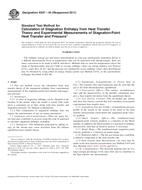
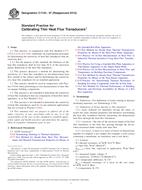 ASTM C1130-07(2012)..
ASTM C1130-07(2012)..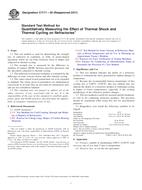 ASTM C1171-05(2011)..
ASTM C1171-05(2011)..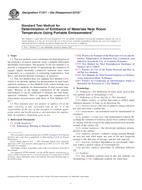 ASTM C1371-04a(2010)..
ASTM C1371-04a(2010)..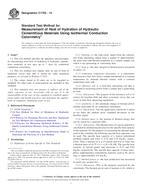 ASTM C1702-14
ASTM C1702-14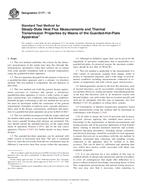 ASTM C177-13
ASTM C177-13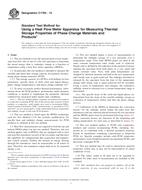 ASTM C1784-13
ASTM C1784-13
 Cookies
Cookies
